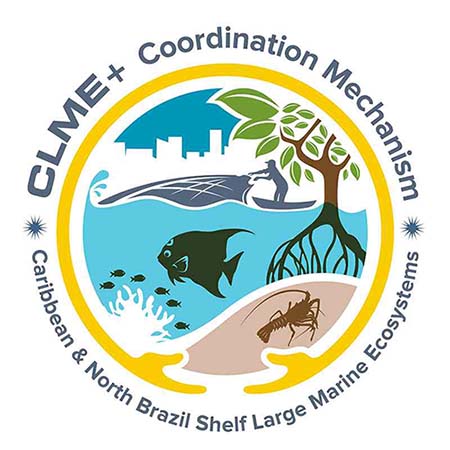Displaying 861-870 of 893 results

Wasterwater – Shifting Paradigms: From Waste to Resource
Innovation, Significant Financial Investments, and Paradigm Shifts Are Necessary to Achieve the Sustainable Development Goal for Water in the Latin America and Caribbean Region
 4
4


 Report issue
Report issue
Wastewater Management A UN-Water Analytical Brief
The report is structured into eight sections. The first two sections provide the context of the report and look, briefly, at why poor wastewater management is a problem. Section 3 builds on the Introduction and sets out the current situation – in terms of water quality issues and considers the main wastewater components (domestic, industrial and agricultural) in turn. Section 4 outlines some of the wastewater management options available and discusses aspects that need to be considered before implementing a system. Section 5 highlights the potential that wastewater has as a valuable resource. Section 6 looks at how wastewater management is being considered in the context of the Post-2015 Development Agenda and section 7 brings together some of the issues that need to be considered in acting upon wastewater management and water quality issues, including the need for strong governance and data gathering. Finally, section 8 presents the conclusions of the report and highlights the need to prioritize wastewater management.
 3
3


 Report issue
Report issue
Wastewater Reuse in the Eastern Caribbean: a Case Study
Wastewater reuse is now widely recognized as an important source of water supply in water-scarce countries and a solution to environmental problems associated with untreated wastewater discharge. In the Eastern Caribbean, competition for potable water between tourism and local domestic needs has seen a growth of desalination treatment plants. The need for water by the tourism sector peaks during the dry season when availability is at its minimum. This paper discusses the potential of wastewater reuse in the main tourism-dependent islands in the Eastern Caribbean. The nexus between desalination and wastewater reuse allows the hotels and resorts sector to reduce the overall costs of water supply, overcome shortages in the dry season and meet stringent wastewater disposal requirements, as it was found that wastewater reuse can meet up to 38% of total needs. In many of the islands, there are suitable conditions for promoting wastewater reuse.
 4
4


 Report issue
Report issue
Wastewater The Untapped Resource – The United Nations World Water Development Report 2017
The 2017 edition of the United Nations World Water Development Report (WWDR) explores the issue of wastewater and its potential as a sustainable resource. Wastewater is not merely a water management issue – it affects the environment and all livingbeings, and can have direct impacts on economies, both mature and emerging. Furthermorwastewater flows contain a number of useful materials, such as nutrients, metals and organicmaterial that, much like the water itself, can be extracted and used to for other productive purposes. As such, wastewater constitutes a valuable resource that, if sustainably managed, is setto become a central pillar of the circular economy. The upside to improving the way we managewastewater is huge, with potential co-benefits to societies and the environment.
 4
4


 Report issue
Report issue
WasteWater: From Waste to Resource
Worldwide, the majority of wastewater is neither collected nor treated. Wastewater is a valuable resource, but it is often seen as a burden to be disposed of. This perception needs to change.
 4
4


 Report issue
Report issue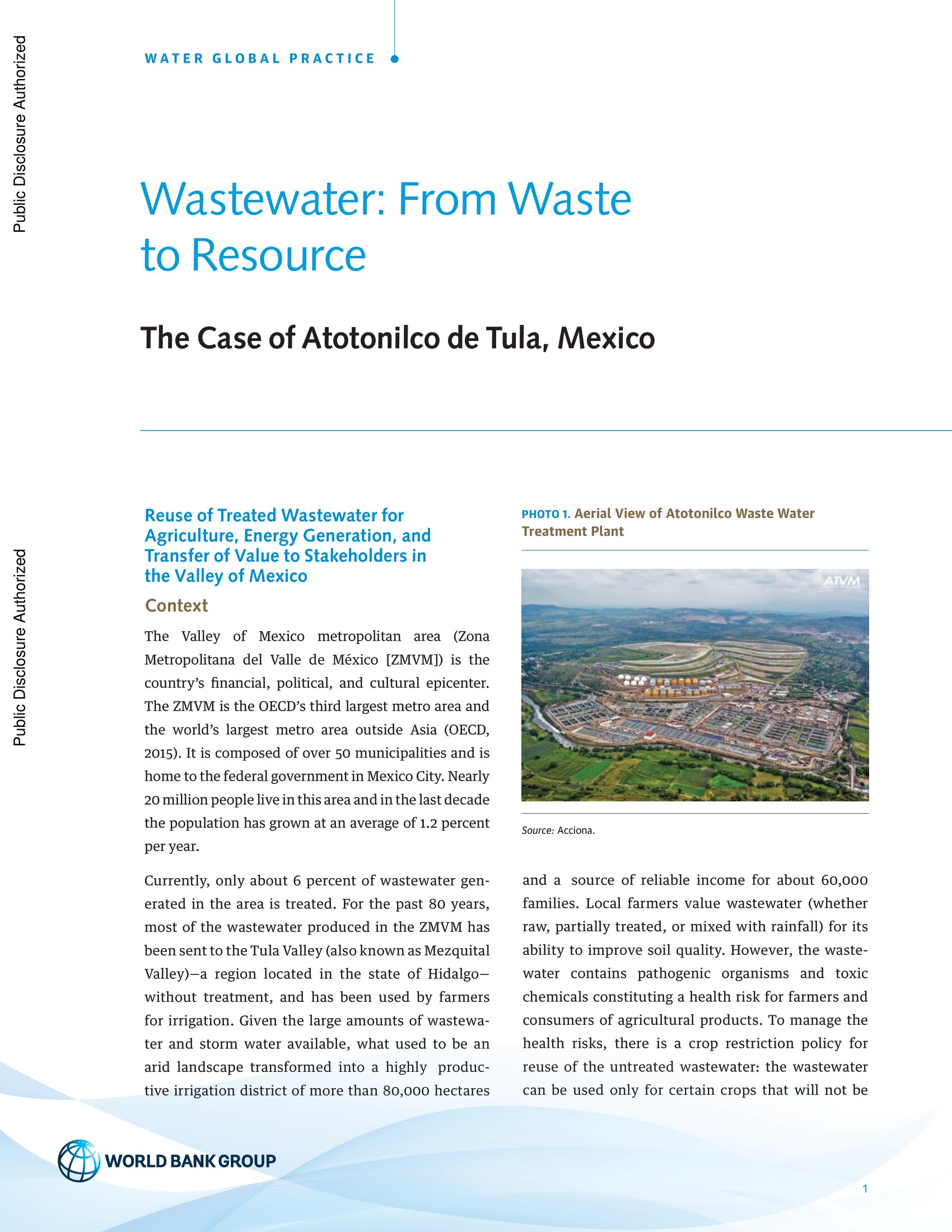
Wastewater: From Waste to Resource – The Case of Atotonilco de Tula, Mexico
The Valley of Mexico metropolitan area (Zona Metropolitana del Valle de México [ZMVM]) is the country’s financial, political, and cultural epicenter. The ZMVM is the OECD’s third largest metro area and the world’s largest metro area outside Asia (OECD,2015). It is composed of over 50 municipalities and is home to the federal government in Mexico City. Nearly 20 million people live in this area and in the last decade the population has grown at an average of 1.2 percent per year. This Document shows the Reuse of Treated Wastewater for Agriculture, Energy Generation, and Transfer of Value to Stakeholders in the Valley of Mexico.
 4
4


 Report issue
Report issue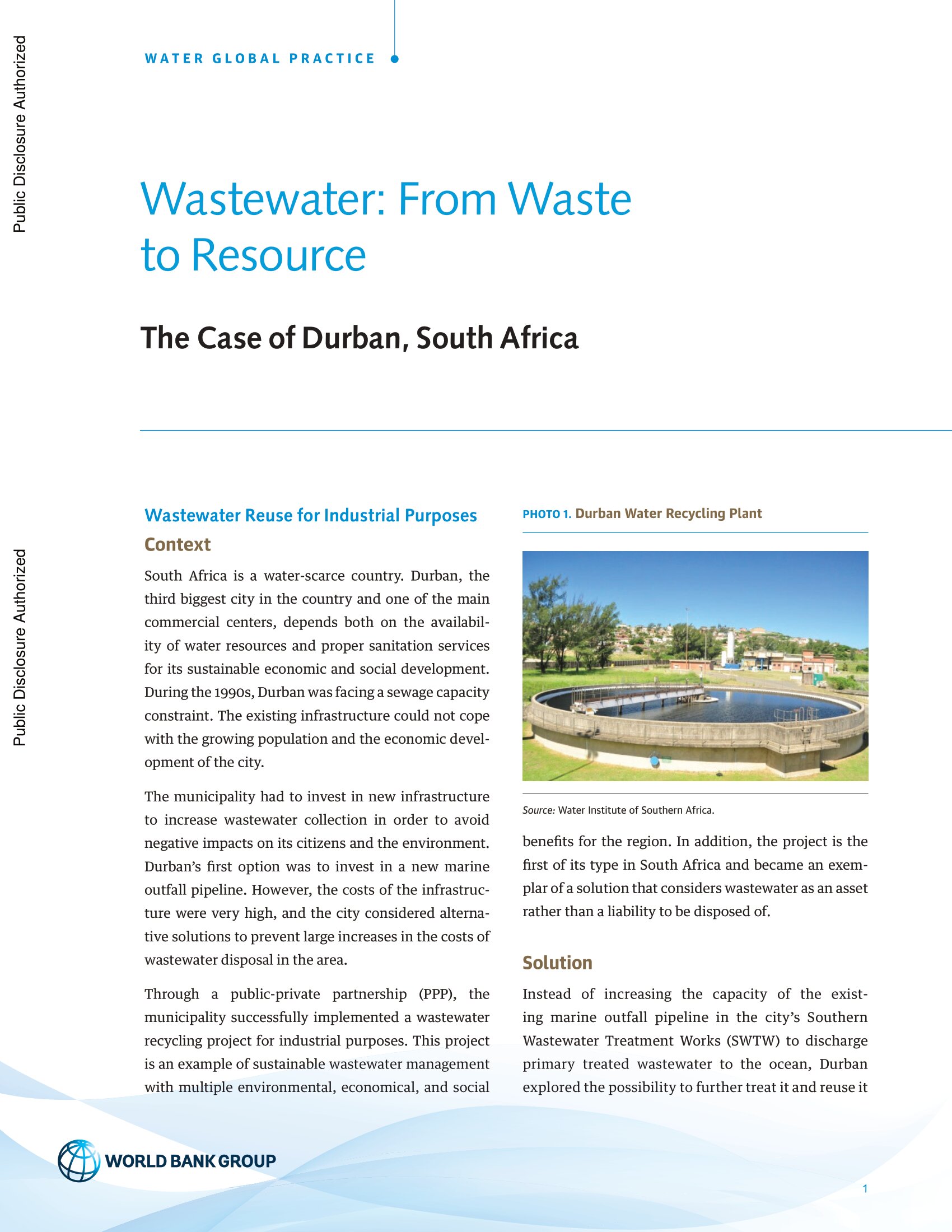
Wastewater: From Waste to Resource – The Case of Durban, South Africa
South Africa is a water-scarce country. Durban, the third biggest city in the country and one of the main commercial centers, depends both on the availability of water resources and proper sanitation services for its sustainable economic and social development. During the 1990s, Durban was facing a sewage capacity constraint. The existing infrastructure could not cope with the growing population and the economic development of the city.
 4
4


 Report issue
Report issue
Wastewater: From Waste to Resource – The Case of New Cairo, Egypt
The Arab Republic of Egypt is a water-scarce country. Most of the country is desert, with the exception of the corridor of urban development along the Nile River and the Mediterranean Sea. Population growth in Egypt’s main urban areas prompted the Government of Egypt (GoE) to encourage the growth of new urban centers to alleviate overcrowding and pressure. Out of necessity, these new centers were located further away from the Nile River. The harsh environmental conditions of the location, combined with the low level of infrastructure present in these areas, have created a potential barrier to the successful establishment of the new cities. One avenue to address these concerns is the rationalization of water use in the new cities, such as by recycling wastewater for use as irrigation for agriculture.
 4
4


 Report issue
Report issue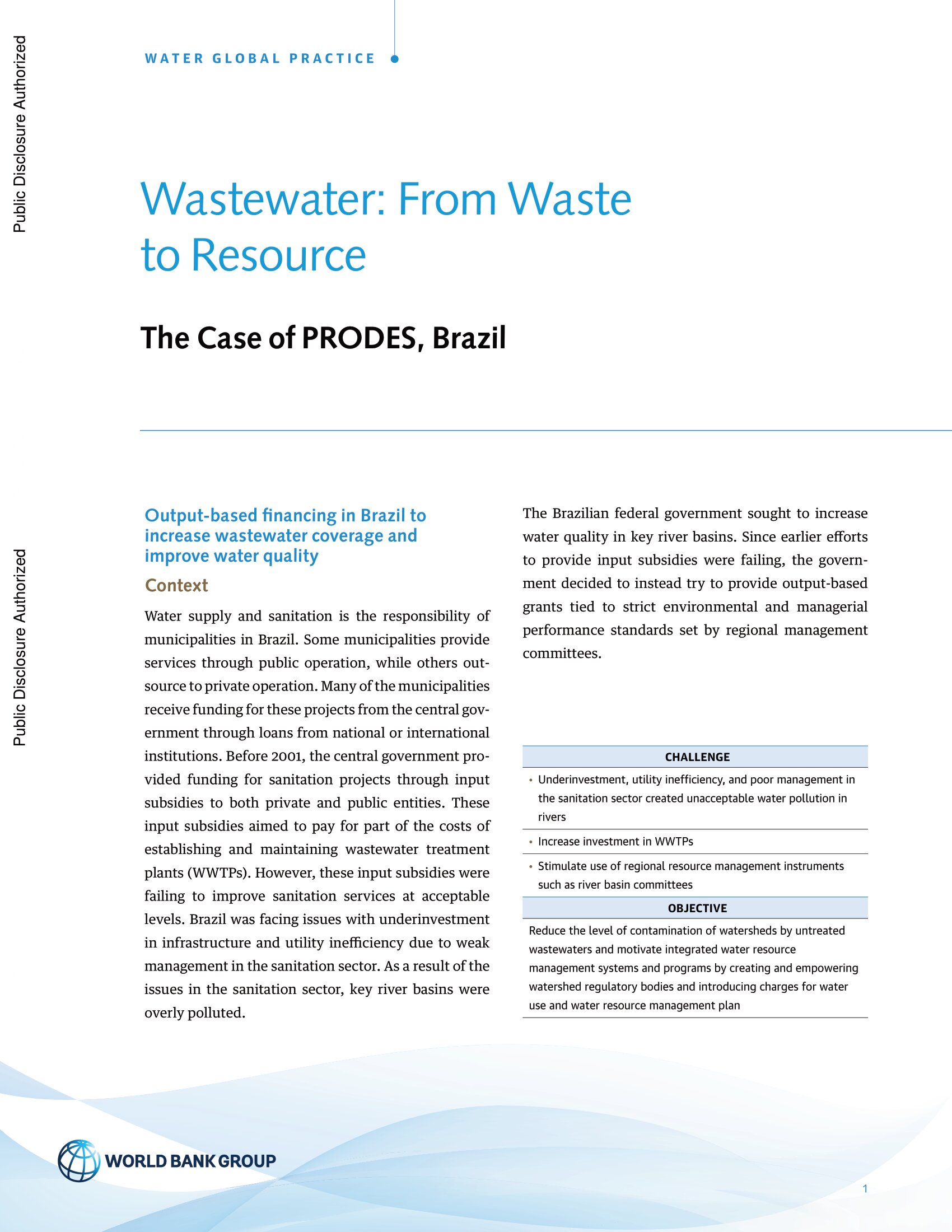
Wastewater: From Waste to Resource – The Case of PRODES, Brazil
Water supply and sanitation is the responsibility of municipalities in Brazil. Some municipalities provide services through public operation, while others outsource to private operation. Many of the municipalities receive funding for these projects from the central government through loans from national or international institutions. Before 2001, the central government provided funding for sanitation projects through input subsidies to both private and public entities. These input subsidies aimed to pay for part of the costs of establishing and maintaining wastewater treatment plants (WWTPs).
 4
4


 Report issue
Report issue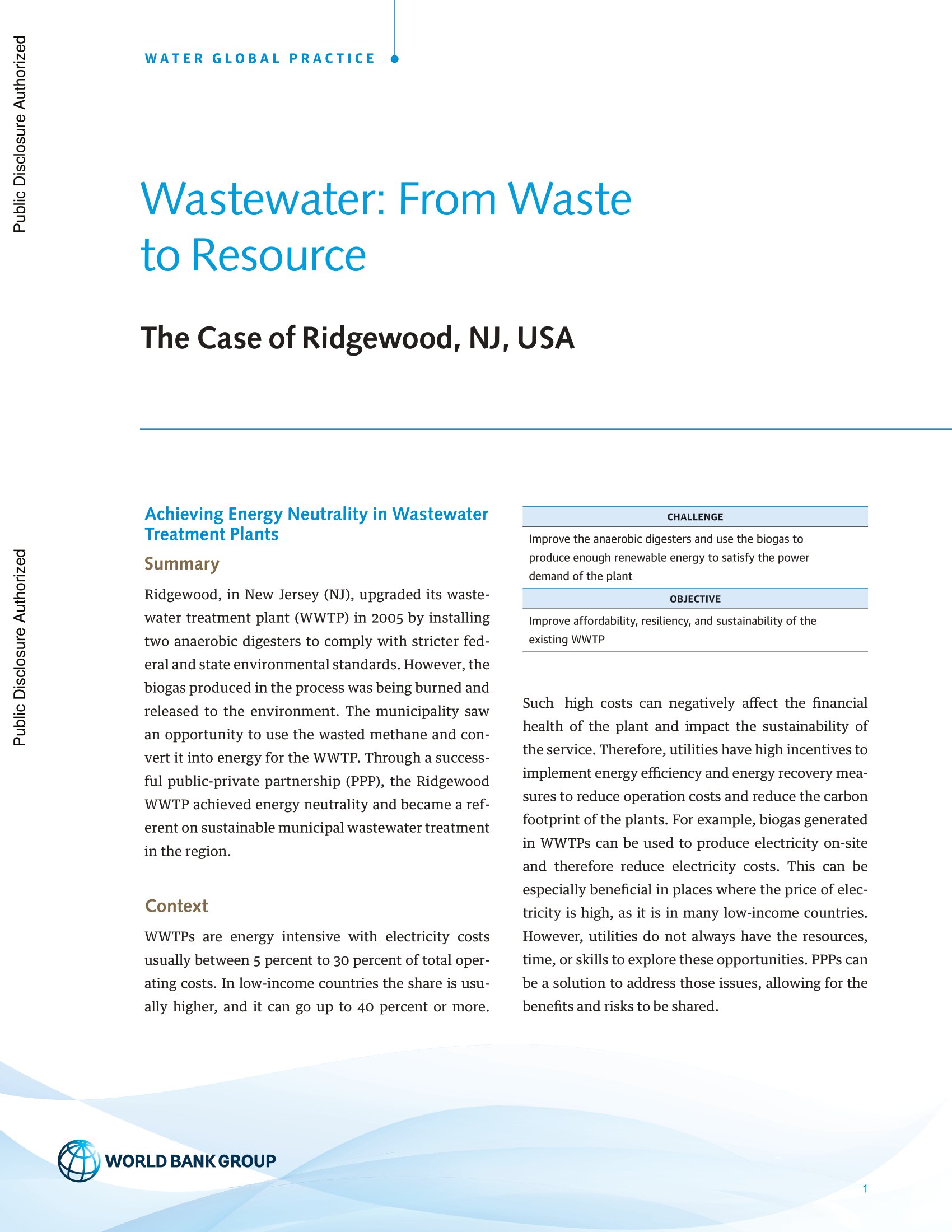
Wastewater: From Waste to Resource – The Case of Ridgewood, NJ, USA
Ridgewood, in New Jersey (NJ), upgraded its wastewater treatment plant (WWTP) in 2005 by installing two anaerobic digesters to comply with stricter federal and state environmental standards. However, the biogas produced in the process was being burned and released to the environment. The municipality saw an opportunity to use the wasted methane and convert it into energy for the WWTP. Through a successful public-private partnership (PPP), the Ridgewood WWTP achieved energy neutrality and became a referent on sustainable municipal wastewater treatment in the region.
 4
4


 Report issue
Report issue